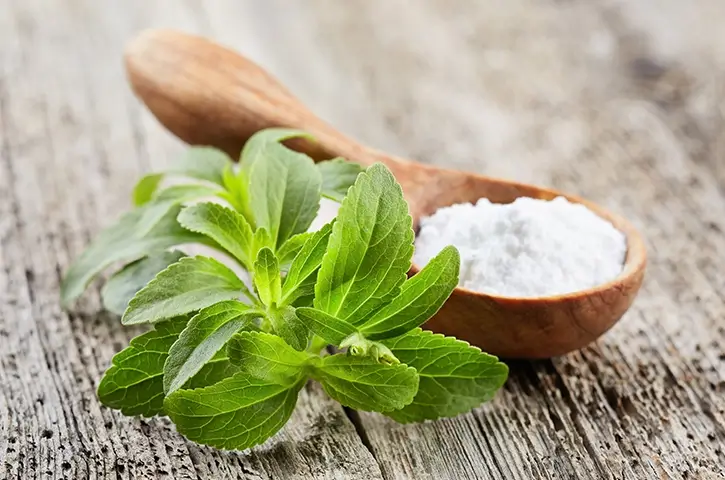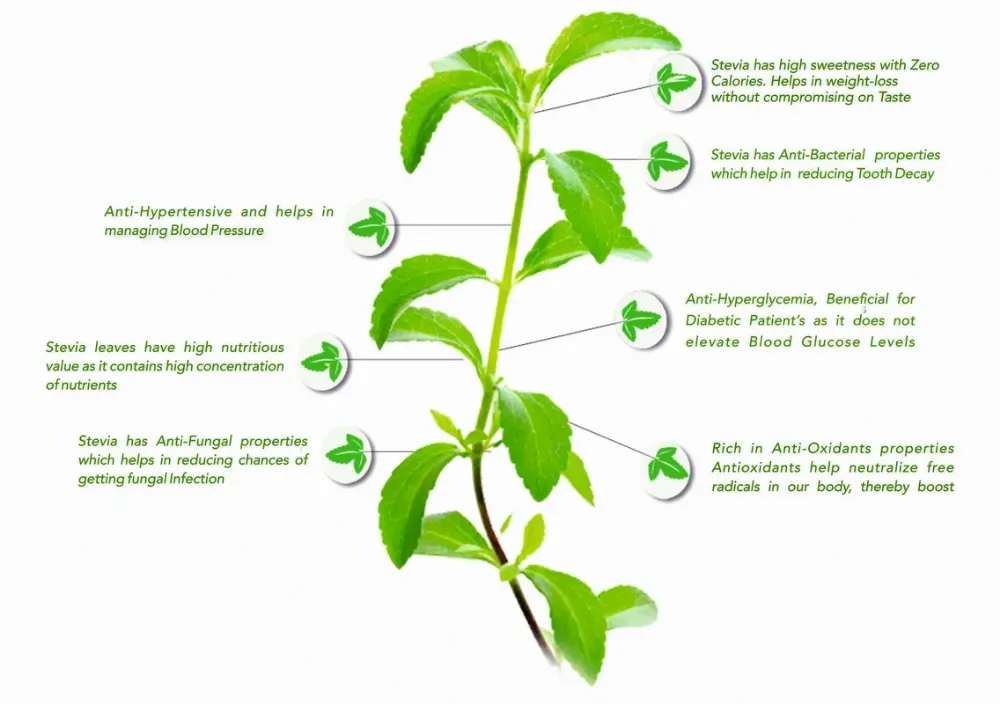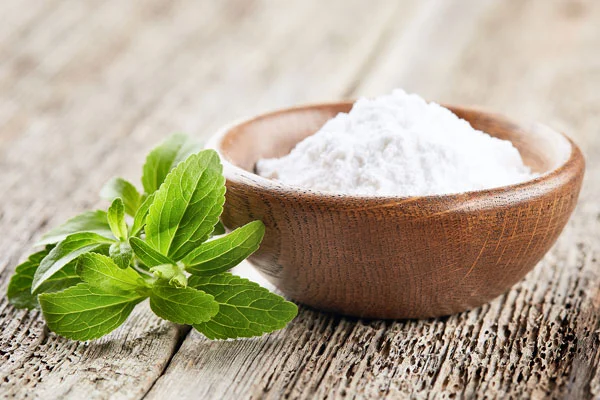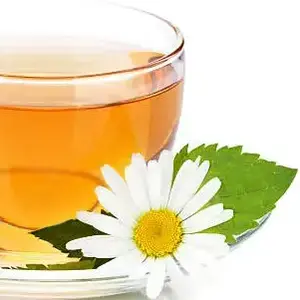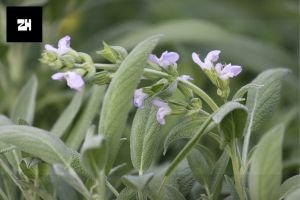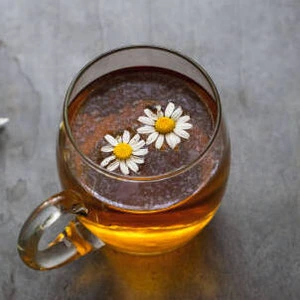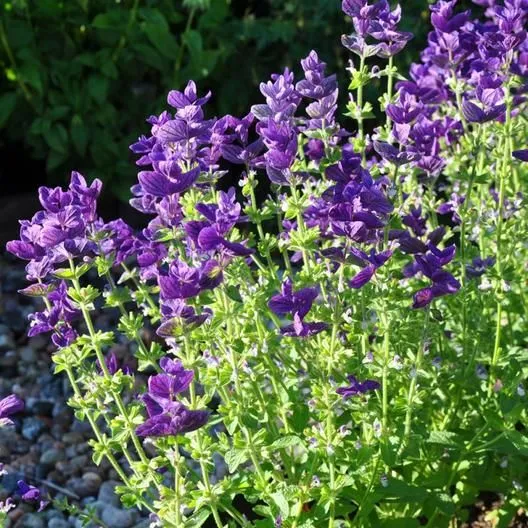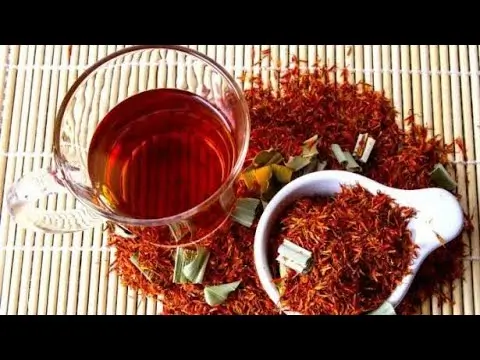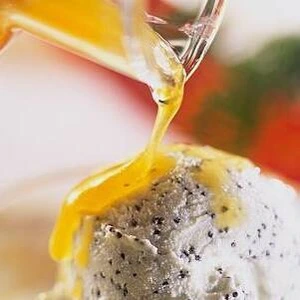Green leaf stevia powder, obtained by crushing or grinding the leaves of stevia, has been recorded as extremely sweet in South America. It can have a slightly bitter or licorice-like aftertaste. It is perfect for how to use green leaf stevia powder for different types of food and beverages.
What it can be used in, the benefits that it comes with, and how you can cultivate your stevia plant. Stevia leaves contain compounds called steviol glycosides, these compounds are sweet. Green leaf stevia powder can be hundreds of times sweeter than table sugar!
Stevia Powder As A Natural Sweetener
This concentrated sweetness allows you to use a much smaller amount than sugar, making it a great option for those looking to manage their calorie intake, and searching for how to use green leaf stevia powder.
However, it’s important to note that green leaf stevia powder can have a slightly bitter or licorice-like aftertaste. This can be masked by combining it with other natural sweeteners like monk fruit or erythritol.
Is Stevia Safe?
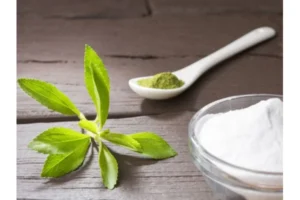
Stevia has been used for centuries in South America and has been recognized as safe by numerous health authorities, including the FDA and the European Food Safety Authority.
However, it’s important to note that this safety assessment applies to purified steviol glycosides used in commercial stevia products. Whole leaf stevia and crude stevia extracts are not approved for use as sweeteners by the FDA.
Here are a few considerations if you want to know how to use green leaf stevia powder:
- Purity: Ensure you use pure green leaf stevia powder without additives or fillers.
- Allergies: Some individuals might be allergic to stevia. Stop using it if you notice any side effects.
- Dosage: Use stevia in moderation. Its intense sweetness means you only need a small amount to achieve the desired effect.
Health Benefits
Beyond satisfying your sweet tooth, stevia may offer health benefits such as Potential Health Benefits. Let’s explore how stevia can positively impact your well-being:
- Blood Sugar Control: Stevia does not raise blood sugar levels, making it safe for diabetics.
- Weight Management: As a zero-calorie sweetener, it can help manage weight by reducing overall calorie intake.
- Dental Health: Unlike sugar, stevia does not contribute to cavities and tooth decay.
It’s important to read: Benefits of Stevia Leaf Powder: A Natural Sweetener for Better Health
Drying Stevia Leaves
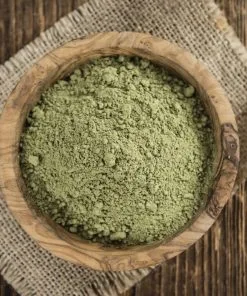
For those who enjoy the DIY approach, you can create your own green leaf stevia powder from scratch. Here’s how to use green leaf stevia powder and how to dry stevia leaves:
Harvesting:
The best time to harvest stevia leaves is during the summer months, before the plant flowers. Choose young leaves for the sweetest flavor.
Drying Methods:
Before mentioning the drying methods, make sure to keep the powder in a closed jar. Stevia sugar can absorb moist, which can degrade the powder
Air Drying
Bundle several stevia stems together and hang them upside down in a cool, dark, and well-ventilated area. This may take you several days or weeks.
Dehydrator
For a faster drying option, use a dehydrator set to the lowest temperature setting (around 95°F). This process will take from 4 to 8 hours.
Once the leaves are completely dry and brittle, they’re ready to be ground into powder.
How to Grow Stevia
Growing your stevia plants allows you to have a readily available supply. Here’s a breakdown of the process of how to use green leaf stevia powder:
- Soil: Choose well-drained, slightly acidic soil for optimal stevia growth; avoid waterlogged conditions to prevent root rot.
- Planting: Stevia can be grown from seeds or purchased as young plants. Seeds require warm soil and can be started indoors for 8-10 weeks before transplanting outdoors in late spring.
- Location: Choose a sunny location with well-drained soil. Stevia requires plenty of sunlight.
- Spacing and Care: Space your stevia plants 18 inches apart for proper growth. Water moderately. Regularly pinching back the stems encourages bushier growth.
- Harvesting: Throughout the summer, you can harvest leaves for fresh use or drying. Harvesting in the morning when the leaves are at their sweetest is best.
- Overwintering: Stevia can survive mild winters in zones 8 and above. However, many gardeners prefer to replant each year for the best quality leaves.
How to Use Green Leaf Stevia Powder
Green leaf stevia powder offers a versatile way to sweeten your food and drinks:
Direct Sweetening:
A single crushed leaf can be added to a cup of tea for a natural sweetness. Sprinkle a small amount of powder on top of fruit, yogurt, or cereal.
Baking and Cooking:
Stevia powder can be used as a sugar substitute in baking recipes. However, due to its potency, you’ll need to use much less than the amount of sugar called for in the recipe.
To make sure how to use green leaf stevia powder correctly, start with a small amount and gradually add more to achieve the desired sweetness. Be aware that stevia powder may affect the baking properties of some recipes, so experimentation is key.
Liquid Stevia Extract:
For a more convenient option, you can create a liquid stevia extract by steeping dried leaves in high-proof alcohol for 24-36 hours. Strain the leaves and use the extract sparingly in drinks or cooking. Be mindful that heating the extract can affect the flavor.
Since green leaf stevia powder is highly concentrated, start with a minimal amount and taste as you go. It’s easy to overdo, resulting in an overly sweet or bitter taste.
Read about: Chamomile Mint Tea Benefits, Side Effects | How to Prepare
Instructions for Making Sugar-Free Powdered Stevia
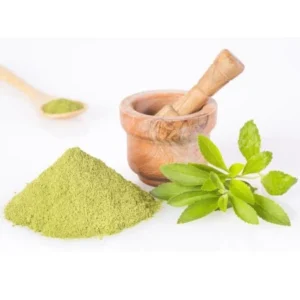
Step 1: Prepare Your Stevia Leaves
– Remove the stems from the leaves and give them a quick rinse with clean water if you’re using freshly harvested stevia.
– Lay the leaves on a paper towel and let them air dry naturally for 3-4 days. Ensure they are completely dry and have a crispy texture.
Step 2: Grind Stevia Leaves
– Once the leaves are thoroughly dried, grind them into a fine powder using a Magic Bullet Blender, coffee grinder, or any suitable grinding appliance.
Step 3: Check The Powder
– After grinding, spread the powdered leaves on a small container or plate to inspect for any remaining leaf particles.
– For a finer texture, you can pass the powder through a fine sieve to ensure all leaves are finely powdered.
Now, your homemade stevia powder is ready for storage and use, and you know completely how to use green leaf stevia powder!
Tricks and Tips:
– Harvest stevia leaves at the end of summer for optimal sweetness.
– Utilize a food processor, coffee grinder, mortar, or pestle for efficient leaf grinding.
– Drying stevia leaves on paper towels is simple and effective, eliminating the need for specialized drying equipment like dehydrators.
Conclusion
Green leaf stevia powder is an ideal sugar substitute that can be used in diets and is very nutritious in many ways.
If you want to know how to use green leaf stevia powder and have a more controlled diet, maintain a more balanced carbohydrate intake, or simply enjoy having a natural sweetener in your home, green leaf stevia powder is a great option.
It is also important not to overindulge in this particular nutritious food and to take the natural goodness it brings to the diet table generously.
FAQs
1-How to use green leaf stevia powder?
- Direct Sweetening: Sprinkle a tiny amount of yogurt, fruit, or cereal, or add a single crushed leaf to a cup of tea for a natural sweetener.
- Baking and Cooking: Substitute stevia powder for sugar in recipes. Be aware that stevia powder can affect the baking properties of some recipes so experimentation might be needed.
- Liquid Stevia Extract: For a more convenient option, create a liquid extract by steeping dried stevia leaves in high-proof alcohol for 24-36 hours.
2-How much green stevia powder is to use?
Unfortunately, there’s no one-size-fits-all answer for stevia quantity. It depends on your personal taste preference and the sweetness of the recipe.
A good rule of thumb is to begin with a quarter teaspoon of stevia powder for every cup of sugar called for in a recipe.
3-Can I Freeze Powdered Stevia?
Freezing powdered stevia isn’t recommended because it can alter its texture and quality due to moisture accumulation during freezing and thawing.

